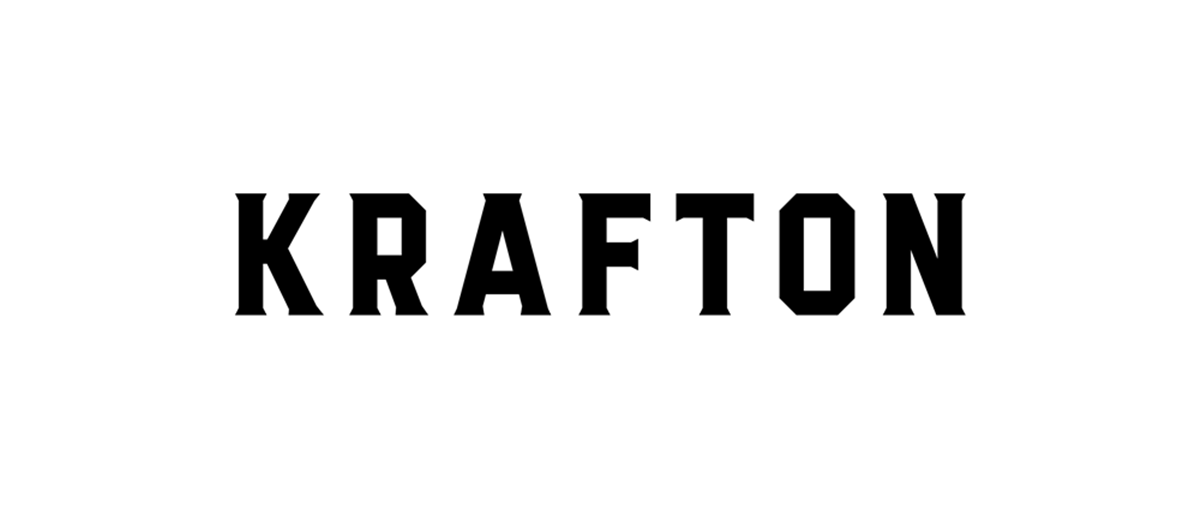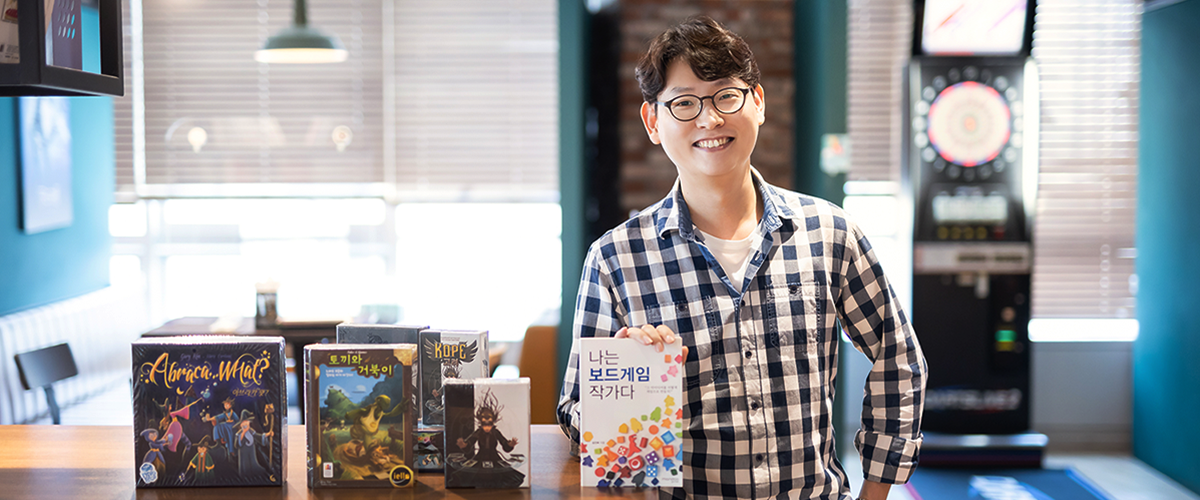A Board Game Master, Dreams of Becoming a Mobile Game Master
A person who was a board game geek who became the first-generation board game designer of Korea, and then a game designer of the KRAFTON Bluehole Studio? We met with Gunhee Kim, a man with a very special background. Why in the world did he become a game designer for Bluehole Studio? We asked him about board games and mobile games.
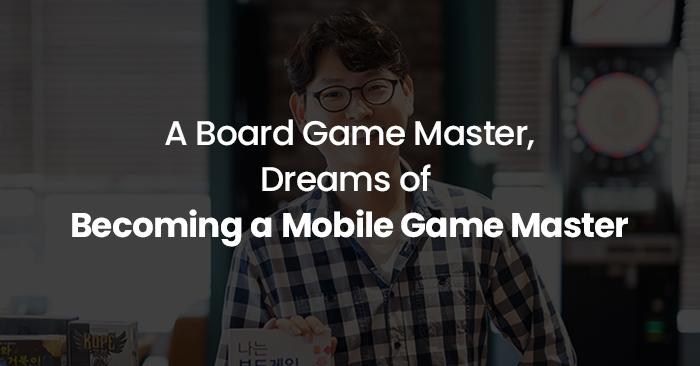
Hello Mr. Kim. Could you please introduce yourself briefly to our readers?
My name is Gunhee Kim and I am a game designer at KRAFTON Bluehole Studio. I plan and design mobile games.
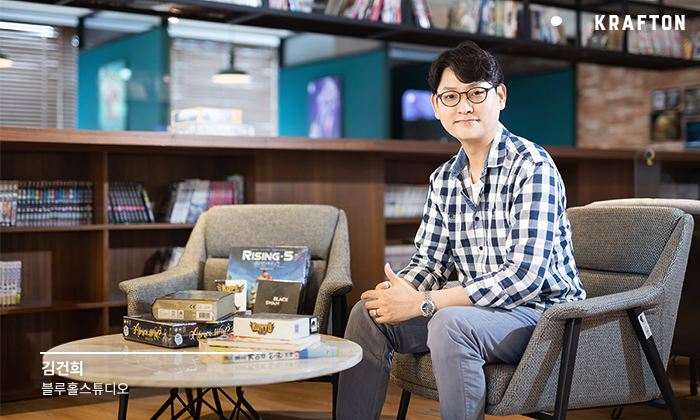
You have a very unique background. You are a first-generation board game master of Korea who was a board game designer since 2003.
The history of the Korean board game market is quite short. I’m not that old, but I’m first-generation. (Laughter) My dream was originally to become a cartoonist. I majored in living design in university and took a practical course there, but I found that it was no fun. I had to search for how to make a living, so I moved into the school’s startup center and made various attempts there. And one of them was board game room franchise business. Board games were a huge trend when I was in university.
I studied the market, and decided to give up. At the time, the outlook for board game rooms was even bleaker than that of internet cafes. (Laughter) Afterwards, I was hired by an investment consulting company that had nothing to do with board games. I spent about seven years as an office worker.
Why did you quit your job and take the path of board games?
I was 35 at the time. I thought hard about whether this would be lifelong job, but then I decided to do what I really wanted. I loved board games ever since I was in elementary school. I was basically a board game geek. Stationery stores used to sell “Jolly” board games for about a dollar or two, and I would always go and play board games with friends in the neighborhood.
Board games became popular when I was in college and that’s when I started to play in earnest. I spent a lot of time playing board games from Europe and the US. But board game rooms started to disappear one after the other and the trend was over. But I still played even after I became employed.
When did you start making board games?
I used to play every day back in university, so I naturally started to think that I could make a board game too. One time, I was given an assignment at the business studies class. The assignment was that each team would receive about a thousand dollars and we had to make anything we could by the end of the semester. That’s the first time I made a board game. I have been making them ever since then.
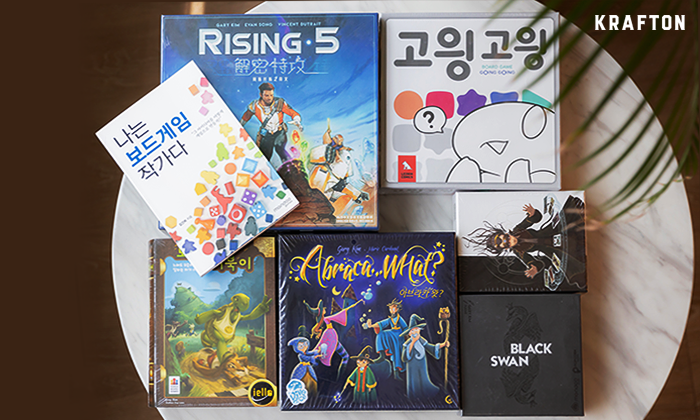
I would like to know through what process you became a board game designer after you quit your job.
The safest bet would be to join a board game company, right? After I quit my job in 2013, I applied to the largest board game manufacturing company in Korea at the time, but I was not hired because I had no experience and I was old. You need to have references to become a board game designer, but I didn’t know what I had to do at the time, so I first established the “Korea Board Game Designers Association.” While the title is a bit grandiose, it was basically a group of people like me to test board games that each of us made.
One time, I went to a Japanese board game market event with other members. The president of a board game publishing company in France came to pick up a game at the Japanese market, but I happened to meet him, and I showed him the board game called “Present.” He scanned the game and then took it saying that he would try to sell it in France. I thought to myself that this was my big break.
But he said that the French market is completely saturated with these types of games and asked me to show him something else. So, I showed him another prototype that I was working on. We ended up signing a contract and I released my first game in France. It sold well and then Korean board game publishing companies started to contact me.
So, you debuted in France. The overseas markets are bigger than the domestic board game market, right?
It’s much larger. Board games require the luxury of time and mind, so the North American and European markets are the biggest. And the designer pool is much greater also. The Korean board game market was just in its starting stage, so I was a bit lucky. Because there were few board game designers in Korea, the work naturally flowed into me and before I knew it, eight years passed.
Were you confident that the Korean board game market would develop like North America or Europe?
It’s changing a lot right now. For my generation, children playing board games with parents was inconceivable at the time. And basically, the only board game available was Blue Marble. But homes with children today are quite different. The entire family plays different board games together such as Rummikub, Jenga, and Halli Galli. I played a lot at home with my daughter, too. She’s grown up now and won’t play board games with me anymore because she’s busy chasing after K-pop idol groups… (Laughter)

How is a board game created?
There are usually one or two designers and they create the mechanism. After signing a contract with the publisher, we collaborate with the editor of the publishing company, and an artwork designer and story writer contracted by the publishing company. The basic structure is similar to that of making books. If an author is a person who writes words, then a board game designer is a person who writes rules to a game.
It takes about a year and a half until the board game is published. The testing process takes the longest time. Reactions are tested just like online games. We listen to the opinions of family, friends, and professional publishers. And then we take a sample under production to offline events and test it with the general public. Revisions are made quite frequently. Sometimes, there are more than 10 versions.
What is your all-time-favorite board game?
I played “Catan” back in university and it was really fun. It took 30 minutes just to learn the rules, and it was quite tiring. But once I started, I became wide awake. The game I played the most was “The Great Dalmuti.” This game was created by Richard Garfield who also made “Magic: The Gathering.” The mechanism was so genius that I became completely immersed in it.
I have recently been enjoying the game called “The Initiative.” This is a game that was created by the supervising developer at “Fantasy Flight Games,” which is known as the Blizzard Entertainment of board game industry. This is a mystery genre game where you have to find and solve secret codes, and it was created in a way that allows playing games even between game stages. The core of this game is in the out game.
Aside from board games, do you also enjoy online or console games?
I love console games. It will give up my age… (Laughter) But I started with Mega Drive and these days, I play everything including PlayStation and Nintendo. I’ve recently been really into Oculus Quest 2 and I play an RPG board game called “Demeo.” This board game was embodied really well with AR. I also enjoy mobile games, and I have about 200 games installed on my phone.
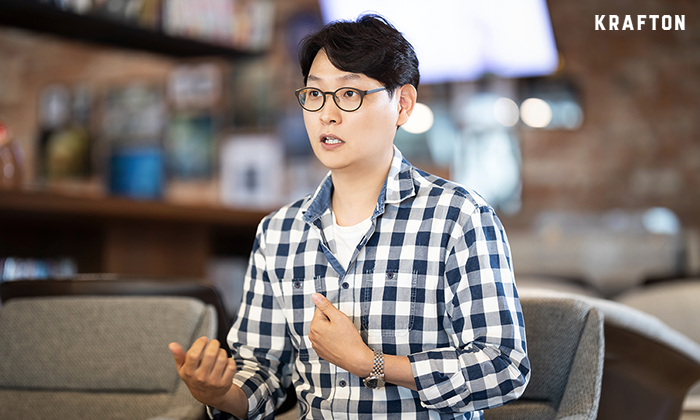
You were a famous board game designer, but joined Bluehole Studio. Why?
Bluehole Studio contacted me and suggested producing a mobile game together. I have become an established board game designer, and so I have been thinking a lot. And I was always interested in mobile games. Existing board games are now being released on mobile devices and I also wanted to try making something new by integrating new technologies.
There are two methods for developing board games. One is to develop it with intuitive ideas and the other is to set the target and analyze first. I think there is a similarity in the development process of board games and mobile games. There certainly are similarities of hit board games and mobile games.
While developing board games, I realized that I have the ability to catch elements that people find to be fun and I can combine those elements. I think this goes the same for mobile games. In the end, fun is the strength of people. At Bluehole Studio I want to take on the role of producing emotions and capturing the core fun of games.
Could you explain in detail some challenges you want to take on at Bluehole Studio?
I have just joined and am only in the beginning stage, but I plan to produce a mobile game targeting the global market. My goal is to create a game that is easy for people to play, but with maximum entertainment. It’s quite difficult to make a big hit. Most people usually just follow that which has already been proven. I hope to be able to be half a step ahead of the rest of the pack. That’s because if it is too far ahead, it will become a game that is difficult to appeal to the general public.
I know that it will be difficult to make a game that is completely satisfactory on our first try, but I hope to collaborate with the design (planning), art, story, and marketing experts at Bluehole Studio. I think that man power is especially important for developing games. In my opinion, the right way to go about this will be for everyone to find what they are best at and heading toward the direction for higher perfection. I want to talk with my colleagues and create a game that can really utilize our man power.
Lastly, do you have any personal goals as you start new at Bluehole Studio?
I never knew that I would become famous as a board game designer. My plan back then was to try for just three years, and if it didn’t work out, I would find another way to make a living. If I failed, I was thinking that I would get a part-time job at the convenience store on the first floor of my building. (Laughter) I am now beginning a new challenge, and so I want to be a person who makes good games wherever and whenever.
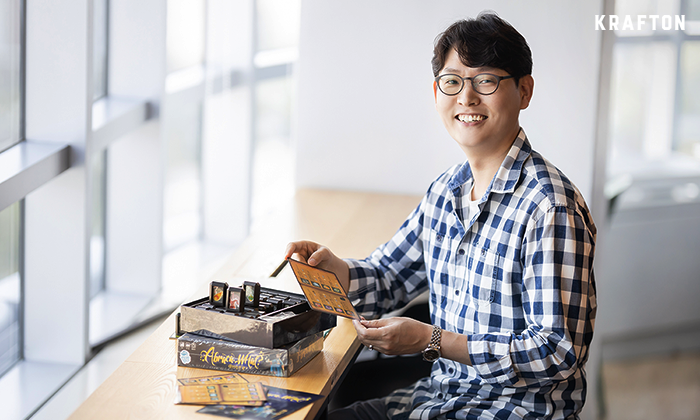
Listening to Gunhee Kim’s history was like watching a long drama. It’s like the story of a young man who raced toward what he was passionate about, grew, and finally achieved his dream. And at the end, it is like a teaser for season 2 where he appears as a mobile game designer. His second season kicks off at Bluehole Studio. With anticipations of a new game that will be created through the collaboration of his talents for precisely picking out what people find fun in and Bluehole Studio, [People On] will continue to provide up-close coverage on the challenges taken on by the employees of KRAFTON.
